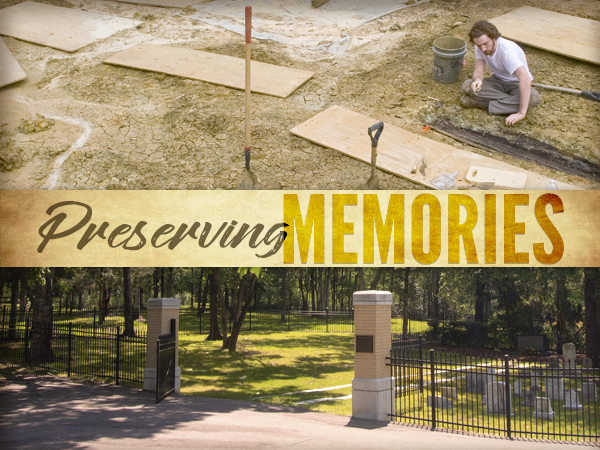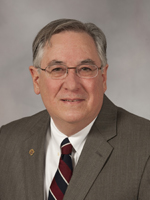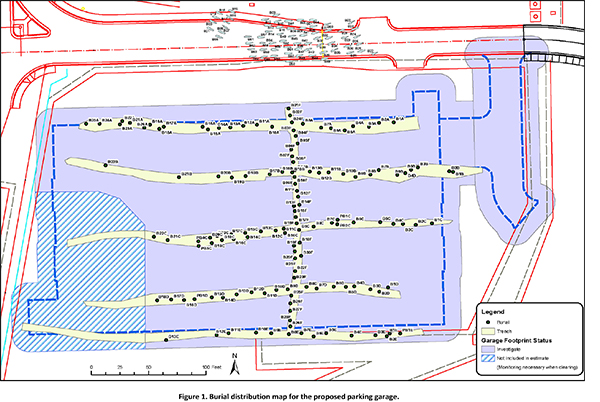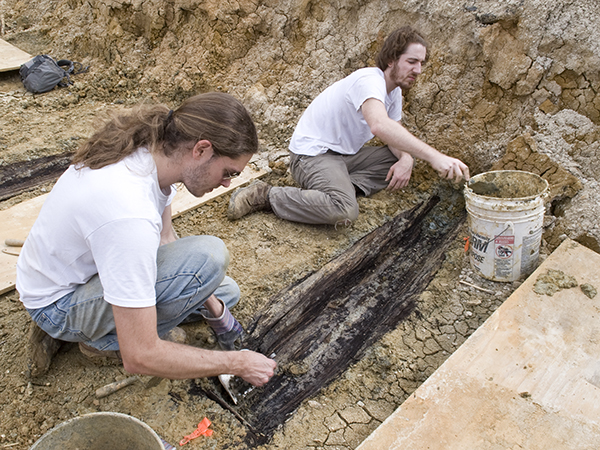UMMC evaluates options to memorialize asylum patients buried on campus

The University of Mississippi Medical Center is studying ways to memorialize remains of up to 7,000 patients of the state's first mental institution who were buried on campus from the mid-1800s to the early 1900s.
Options include exhuming and reburying each body, which could cost up to $21 million. The Medical Center, however, is researching a plan in which it would oversee exhumation of bodies of Mississippi State Lunatic Asylum patients at a cost of $3.2 million over eight years. UMMC would construct an on-campus memorial to respectfully preserve the remains next to an existing campus cemetery that's home to the remains of those who donated their bodies for education and research.
The memorial would be open to the public. It would honor the memory of the asylum patients and serve as a monument to their legacies.

Dr. Ralph Didlake, associate vice chancellor for academic affairs and director of UMMC's Center for Bioethics and Medical Humanities, said plans also call for the creation of a first-in-the-nation laboratory to study the remains. The research would shed light on lost history surrounding life at the asylum constructed in 1855 and home to upward of 35,000 patients before it was shuttered in 1935.
It could reveal experiences and health conditions that ended in the institutionalized patients' deaths at a time when huge stigma was associated with mental illnesses such as depression and schizophrenia.
“We don't know how many burials are there,” Didlake said of a 20-acre stretch on the campus' east side. “The current estimates, and these are based on estimates from archaeological experts, are somewhere between 5,000 and 7,000.”
Medical Center administrators have known about the presence of bodies - but not in such large numbers -- since before the Medical Center opened in 1955. Sixty-six coffins were discovered in November 2012, when a construction crew completing a new road near the northeast corner of campus unearthed the remains.
Smaller construction projects dating back to the 1990s revealed pockets of remains that were relocated to the UMMC Cemetery, but nothing that approached the numbers of those unearthed in 2012-13. That spurred a survey of the grounds around the construction area.

A 2014 evaluation of the area in preparation for construction of a parking garage revealed up to 2,000 more graves, and the parking garage was built in a different location.
Further exhumations would be performed “through standard archaeological practices through which this is done, all over the world,” Didlake said. The graves are located in an undeveloped portion of campus where no immediate construction is planned.
“If we exhume the remains and rebury them off site, what we would have at the end of that process is a cemetery. But with the project we're proposing, we will have not only a respectful memorial for these individuals, but we will have an education platform and a research resource.”
Didlake said he and others have created the UMMC-based Asylum Hill Research Consortium to develop plans for the memorial and laboratory. The group counts historians, archaeologists and anthropologists in its membership.

“But human remains represent archives and sources of information about human health and disease, and life experiences in the past that cannot be gotten from any other source of information,” said Zuckerman, a bioarchaeologist and paleopathologist.
The construction crew in 2012 scraped away decades-old layers of dirt to reveal 66 coffins containing human remains that were unmarked, making it virtually impossible to attach names of them. Those wooden coffins, unearthed through March 2013, are believed to date from the late 19th to early 20th centuries.
An anthropology team from MSU respectfully and ethically removed and documented those skeletal remains, adhering to guidelines from the Mississippi Department of Archives and History in Jackson.

The asylum's main building rose four stories alongside north State Street near the current Ronald McDonald House site on the UMMC campus. Many patients who died at the asylum were buried on a site hundreds of yards to the east. Their coffins are about six feet long but are unusually narrow because the weight of soil has compressed them over the decades.
“They have all been pine coffins of the same design, probably built by the same individual,” Didlake said. “We have in our collection, in our campus library, an insurance map from the asylum from 1925 that actually shows the carpentry shop where these coffins were likely built.”
The asylum was replaced by the Mississippi State Hospital in Whitfield.
MSU graduate students and faculty, in addition to faculty and students at the University of Mississippi School of Dentistry, studied the remains found in 2012-13, including identifying the bones' characteristics and performing radiographic analysis of teeth. By examining tooth enamel, for instance, archaeologists can learn much about a deceased person's diet, if it was typical for Mississippi. Traces of certain elements - say, lead and carbon - reveal details about a person's environment and approximate age.
Plans by the consortium and UMMC to construct the memorial, including a visitor's center, make for “a revolutionary facility not found anywhere else in the world” that provides a wealth of education and research opportunities, Zuckerman said.
Students, the public and national and international scholars will be able view artifacts and read oral family and community histories, she said. It will allow descendants of asylum patients to research their genealogical history.
As the process unfolds, the Medical Center is seeking input on how to best memorialize patients who were someone's child, parent or relative.
“Community engagement is a very important part of the project,” Didlake said. “These individuals represent all 82 counties in Mississippi. We want to be respectful, and we want to be deeply engaged with the descendant community in how we honor and take care of these people.”
Asylum Hill Research Consortium
- The University of Mississippi Medical Center
- The University of Mississippi
- Mississippi State University
- Jackson State University
- Millsaps College
- The University of Southern Mississippi
- Texas State University


